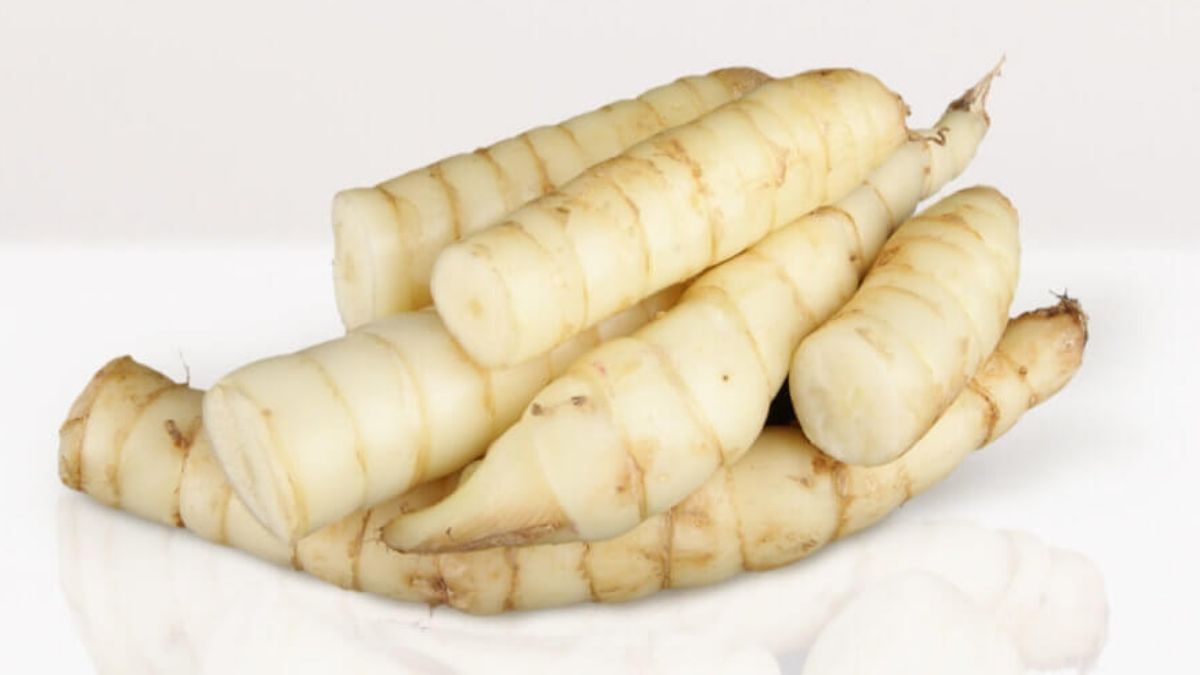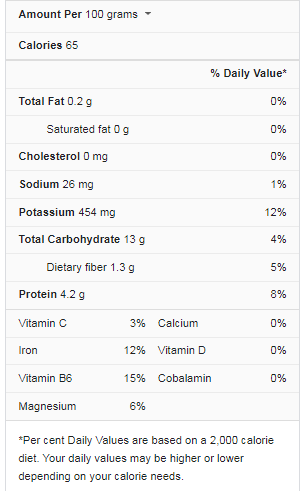Arrowroot comes from a plant. Arrowroot’s root and rhizome (underground stem) are used as a starch source. It’s also used to create medicine on occasion. Arrowroot is claimed to treat irritable bowel syndrome (IBS), diarrhea, various stomach, and intestinal diseases, painful gums, and other illnesses.
However, there is little scientific evidence to back up many of these claims. Arrowroot is found in various cuisines, including cookies, and it’s also utilized as a cooking ingredient. However, cheaper starches such as potato, corn, wheat, or rice starch are frequently substituted for arrowroot.
For years, arrowroot has been used as a home treatment for stomach problems. Recent studies suggest utilizing arrowroot to treat diarrhea and irritable bowel syndrome may have medicinal validity. According to one exploratory study, arrowroot can aid diarrhea and stomach pains. However, because this was a small study with only 11 participants, more research is needed to confirm these findings.
What is Arrowroot?
Arrowroot is a root vegetable and edible rhizome native to the Americas and the Caribbean. When compared to other root vegetables, it is more extensive. It’s available fresh at the market or as a powder, and it can also be used as a cornstarch alternative.
Maranta Arundinacea is the scientific name for arrowroot. According to a study, this vegetable is widely utilized in various sweet and savory cuisines and has therapeutic characteristics. It has a lot of protein, and it’s also high in folate (vitamin B9), an essential nutrient for expecting mothers. Folate is essential for the proper growth of the fetus during pregnancy. Iron and phosphorus are also abundant in arrowroot.
It is easy to digest and perfect for youngsters and elderly persons. When harvested, it resembles other underground tubers such as cassava, yucca, and kudzu. It’s also oblong, which makes it look like underground tubers. However, it is extracted using more straightforward and standard processes, and high heat or strong chemicals are not used.
Arrowroot Nutrition Facts
As you can see, arrowroot is primarily composed of starch (approximately 80%). There are 65 calories and 13 grams of net carbohydrates in 100 grams of arrowroot powder. As a result, it has a very high carbohydrate and calorie content. The protein level is modest since it contains most fiber, which aids digestion, weight gain, blood sugar regulation, and immunity. It can also be used to thicken a variety of foods. Arrowroot powder is made from the tuber of an arrowroot plant.
What are the Benefits of Arrowroot?
1. Assists in Weight Loss
The most significant resistance of arrowroot powder is against starch, which the body does not absorb or digest. According to studies, it contains 32 percent resistant starch. As a result, when coupled with water, the starch behaves as soluble fiber in the gut. This similar feature provides you with a long-lasting feeling of satiation. In addition, the protein component of arrowroot can help you feel full. As a result, it can help you control your appetite and lose weight gradually.
2. Gluten-Free
Gluten is found in wheat flour and several other grains, and it can cause allergic reactions. If you have a gluten or corn allergy or celiac disease, you can use arrowroot flour instead of wheat flour. It’s a versatile veggie that can be used in place of corn starch. It also works nicely in bread, cookies, and other baked goods combined with almond or coconut flour. It can also be used to thicken sauces and gravies.
3. Improves Cognitive Skills
Because of its numerous health benefits, arrowroot is an excellent vegetable to add to your children’s diet. It also aids in the development of cognitive abilities.
Working memory, recognition, and language are just a few cognitive skills that require a healthy brain. Arrowroot improves their psychological capacity and mental development in general.
The vegetable is high in zinc, potassium, and iron, which help the brain grow and develop properly. According to a study, it can also help with various neurological diseases, including delayed brain growth. It also helps to improve focus and concentration, which leads to greater cognition.
4. Vitamin B Storehouse
In the form of riboflavin and niacin, arrowroot is a good source of vitamin B. Niacin aids in reducing inflammation, reducing cholesterol, and relieving arthritis discomfort. It can also help to lower the risk of cardiovascular disease.
Arrowroot also includes folate, a B-complex vitamin. It aids in preventing anemia and is necessary for average fetal growth. It contains 338 mcg of folate per 100g serving, which aids red blood cell formation, division, and growth. The presence of niacin eliminates Pellagra symptoms such as diarrhea, dementia, dermatitis, and mortality. Furthermore, folate is required for the fetus’s average growth and development. As a result, arrowroot protects newborns against neural tube abnormalities.
5. Good for The Heart
In the form of riboflavin and niacin, arrowroot is an excellent source of vitamin B. Niacin aids in reducing inflammation, reducing cholesterol, and relieving arthritis pain. Furthermore, it has the potential to lower the risk of cardiovascular disease.
Folate, a B-complex vitamin, is found in arrowroot as well. It aids in preventing anemia and is required for proper fetal development. It contains 338 micrograms of folate per 100 grams, which aids red blood cell production, division, and growth. Pellagra symptoms such as diarrhea, dementia, dermatitis, and mortality are eliminated when niacin is present. Folate is also necessary for the fetus’s average growth and development. As a result, arrowroot helps to protect babies from neural tube abnormalities.
6. Good for Infants
Arrowroot promotes healthy growth and development in newborns by increasing the absorption rate of numerous vital nutrients. It’s a breast milk substitute. In addition, numerous arrowroot snacks can benefit infants with diarrhea, bronchitis, and cough. It can also aid in relieving gum pain throughout the teething process.
You can alleviate their anger and discomfort by baking arrowroot cookies. It’s a delectable dish packed with all of the essential nutrients.
7. Skin Benefits
Arrowroot possesses various skin-healing benefits because of its antioxidants, proteins, and vitamins. It effectively treats blemishes, acne scars, and dark patches on the skin. You can use it topically to get the most out of it.
According to the study, antioxidants aid in removing dead skin cells, allowing new, healthy skin cells to emerge. Antioxidants also help reduce the number of free radicals in the cells, lowering oxidative stress. These free radicals oxidative stress reacts with the oxygen molecule, depriving healthy cells of oxygen. As a result, arrowroot enhances the health of cells.
What are the Uses of Arrowroot?
- You can eat the root of the arrowroot as a vegetable, and it is, however, more commonly used as a powder. Gravies, puddings, jellies, and sauces thicken with it. In addition, if you have a gluten allergy, it can be used in place of cornstarch and wheat flour.
- It’s used as a baking ingredient and in desserts. For example, it can lend a glossy finish to fruit pies, custards, and puddings.
- To give tofu, beef, or other proteins a crispier exterior, coat them with arrowroot powder before stir-frying, deep-frying, or cooking in any other way.
- It can also make acidic sauces, such as cranberry sauce and homemade ice cream. It’s a great way to give ice creams and puddings some structure.
It also has many cosmetic applications due to its oil-absorbing property. Some popular uses are:
- As dry shampoo
- Deodorant ingredient
- Talcum powder
- It can also be used topically in face masks to improve skin health and reduce dark spots.
How to Prepare Arrowroot?
Substituting arrowroot powder for cornstarch in cooking or baking is one of the simplest ways to incorporate arrowroot into your diet.
Arrowroot powder is an excellent thickening agent, and in some cases, it may be preferable to cornstarch or flour. A small amount of arrowroot powder, for example, can thicken soups without making them murky, as other starches often do.
You can peel and slice fresh arrowroot to prepare it, and it cooks the same way as water chestnuts and can be used in the same recipes. The arrowroot peels can also be used like potatoes in stews or fried into chips.
What are the Side Effects of Arrowroot?
Although arrowroot is a reasonably safe ingredient to take, it may cause stomach discomfort and constipation in some people. If you’re thinking of using it as a food formula for your baby, talk to your doctor first to ensure it won’t create an allergic response.
This root vegetable has few known adverse effects, and it is considered relatively safe, with no known adverse effects or drug or chemical interactions.
Conclusion
Arrowroot is a fascinating root vegetable that can be used in place of cornstarch. Because it is high in essential minerals, it provides numerous health benefits. As a result, appropriate bodily functions are ensured, and general health is improved. Additionally, if you are gluten-intolerant, including arrowroot in your diet may be helpful too. Arrowroot is high in potassium, which is believed to help the kidneys eliminate toxins and other stress-inducing chemicals and substances.
It may also aid in the health of the urinary tract and the filtering of waste by the kidneys. It also aids in improving immunity and the control of blood pressure. The low glycemic index and high potassium content of arrowroot have benefited people with diabetes. As a result, experts are currently investigating the benefits of arrowroot flour as an ingredient in diabetic-friendly snacks. For those with celiac disease, arrowroot powder is a gluten-free starch that could be used as a starch alternative. However, this research is still in its early stages, and more testing will be required to prove its efficacy as a gluten-free starch substitute.


